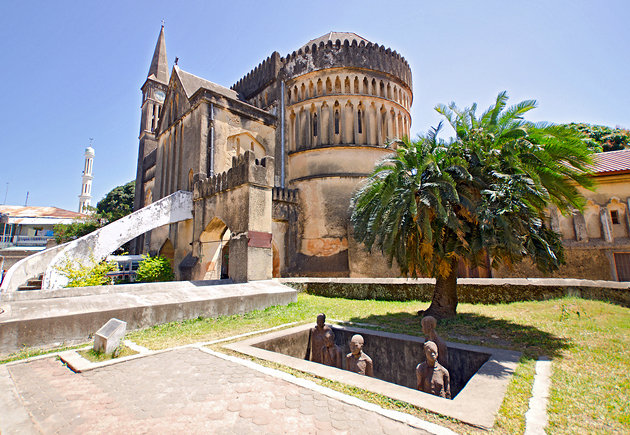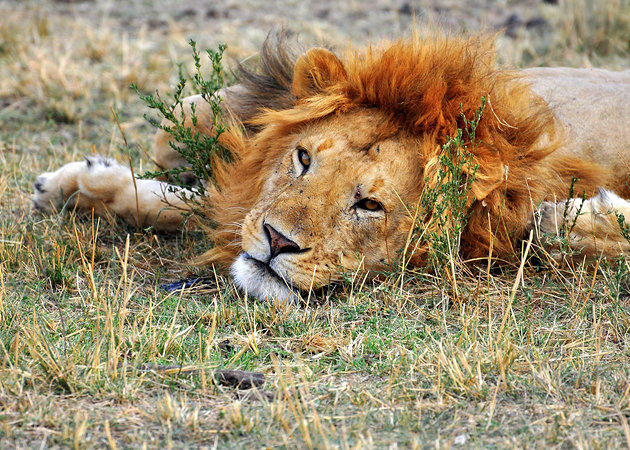What We Do
Ballon Safari
|
Boating & Canoeing Safari
|
Walking Safari
|
Night Game Drive
|
Culture Tour
|
|
Birds Watching Safari
|
Mountain Climbing
|
Olduvai George
|
Lake Natron
|
Historical Site
|
Ngorongoro Crater
|
Tanzania Walking Adventure
|
Kilimanjaro-Machame-9days
|
Honeymoon 14days Safari
|
THE BEST TIME TO VISIT TANZANIA, KENYA & UGANDA
*The best wildlife viewing months in Tanzania are during the dry season from late June to October.
*The best chance of seeing the wildebeest migration in the Serengeti is during June and July and the time to see the wildebeest calving is late January to February. The southern and western circuit parks are best visited during the dry-season (June to October), unlike the
more popular northern circuit parks that can be visited year-round. Tarangire is the only exception, since it's wildlife viewing is considerably better in the dry-season as well.
Jump to: Quick facts
June to October
November to May
Best time to visit by major park
Quick facts
Best time to go: June to October (All parks) , June-July and January-February (Serengeti for the wildebeest migration & calving)
High Season: July to March (northern circuit parks; they get crowded) , July to October (southern and western circuit parks; they don't really get crowded anytime of the year)
Low Season: April and May (northern circuit parks still get quite a few visitors unlike the southern and western circuit parks, where many lodges close down)
Best Weather: June to October (Little to no rainfall)
Worst Weather: March and April (Peak of wet season)
June to October - Dry Season
June and July are the best months to see the wildebeest migration. Animals are easier to spot since they concentrate around waterholes and rivers and there is less vegetation. There are fewer mosquitoes because there is little to no rain. Skies are clear and most days are sunny. Even though most tourists visit during the dry season,the parks still don't feel crowded,except for the Seronera area in the Serengeti and the Ngorongoro Crater.Mornings and nights get cold. It's recommended to bring warm clothing for morning game drives in open vehicles during the months of June,July and August. November to May - Wet Season
Late January to February is the time to see the calving in the southern Serengeti.This is an excellent time to see predator action. The scenery is green and beautiful. It's low season, meaning lower rates and less crowded parks.Although wildlife is easier to spot in the dry season, you'll still see plenty and most northern circuit parks offer good year-round game viewing. Migratory birds are present and birdwatching is at its best. Except for March, April and May,rains are mostly short afternoon showers and seldom have a negative impact on your trip.
March to May is the peak of the wet season. Most big wildlife has migrated out of Tarangire NP and game viewing in Katavi, Selous and Ruaha is clearly better during the dry season. Best time to go to Tanzania by major park
The Serengeti and the Ngorongoro Crater offer good wildlife viewing throughout the year. June and July are the best months for seeing the migration and February is the best month for the wildebeest calving. The dry months offer good game viewing throughout Tanzania. Tarangire and the southern and western circuit (including Katavi,Selous and Ruaha) are best visited in the dry season, from June to October.Serengeti National Park,Ngorongoro CA,Lake Manyara NP
 |

Tanzania is home of Africa”s highest mountain [kilimanjaro] on the northern side of Tanzania MT Meru is the second highest mountain in Tanzania and the oldonyo lengai mountain which lies close Serengeti National park and Ngorongoro conservation area. Also Tanzania is the home from home of 16 National parks including some famous National park in world like Serengeti National park which supports the annual greatest migration of over 3 millions of wildbeast and 250,000 of Zebra and other hooved mammal and another famous ground of nature is Ngorongoro concervation area where the fantastic crater is found and is what brings life to numerous number of animals as well the crater provides the very great easy to simply see the huge number of wild animals closely when you visit the area
Tanzania,Kenya & Uganda – rich in culture and wildlife
Not only will you find a variety of birds and animals in the parks, but also colourful flowers, butterflies and reptiles. For avid divers there is a vibrant underwater world of marine life to be explored on the reefs of the Indian Ocean. On our trips you will also learn more about the different cultures and tribes found in East Africa such as the Maasai, Meru, Chagga and Iraqw people. Tanzania,Kenya & Uganda safari will take you to places you have never been before Different highlights await you on your trip to Tanzania,Kenya & Uganda
Discover Tanzania & Uganda in a group or on a private trip
Moonlight Tours Expedition Volunteer Programs

Moonlight Tours Expedition is dedicated to disseminating information on volunteer work and volunteer-tours programs in Africa. We are also dedicated to organizing a wide range of volunteer work and internship-volunteering programs in Tanzania for individuals and groups of any size.
Our programs in Tanzania include volunteer work in the area of orphanage assistance, teaching, health care, Christian Religion, Media and Journalism, Law, sports, community development and others. Volunteers can participate in most of the programs anytime all year round.
Why volunteering with us?

Our work promotes international co-operation, friendship, cross-cultural exposure, cultural immersion, peace, understanding, solidarity and breaks new grounds for sustainable social-economic development through voluntary work and volunteering-internships programs in Tanzania. We therefore welcome you to participate in our programs and we will be honored by your participation.
.
Please pass on our information to your friends and other prospective and potential volunteers!
|
Moonlight tours expedition package trips depend on the request including some of the necessary things such as flight booking, accomodation, hotel, meal,park fees, Airport transfer etc. For mountain climbing crew,drivers,guides and other personal expenses should be considered as the additional expenses.
TRAVEL VISA AND VACCINATION
All international travelers are required to acquired a visa upon visiting Tanzania one can vist united republic of Tanzania embassy within their country or upon arrival in the country at the air port. Also all travelers are required a valid yellow fever vaccination card.
ARRIVAL TO TANZANIA AND TRAVEL INSURANCE
Tanzania has arrival of different number of airlines arriving within it’s airport which are located in Dar es salaam, kilimanjaro and zanzibar other airlines usually have transit airlines from neighboring countries.Most of the international traveling agents from international countries offer their clients traveling insurance when booking their trips though for those booking trips directly can acquire an insurance from their local insurance Agent
BASIC MEDICATION
We usually suggest to visit your doctor if you require medication or any guidelines other doctors provide clients with preservative treatment medication for diseases such as malaria
 Our Cancellation policy
Refund Policy
(following cancellation by Moonlight Tours Expedition) – To date Moonlight has never had to cancel a booking.The safety of the client is of outmost importance to us, and in extremely rare circumstances Moonlight Tours Expedition may need to cancel your holiday due to natural
disasters, or other unforeseen circumstances. In such an event Moonlight Tours Expedition will
guarantee the following refunds:
*A person has to pay almost 15 day and above before the day for safari if possible for the greatest arrangement
*A person will be refunded if he/she cancels the safari complitely also if a person wants to postpone the safari has to let’s know at least 3 days before Payment methods
*We accept Visa and Mastercard credit cards only. (Additional 3% Bank Fee will be applicable).
Alternatively, direct deposits can be made to the following account (all bank charges should be incurred by the depositor):Client must bare all local & foreign bank transfer fees and credit card commissions if any.
 |







































